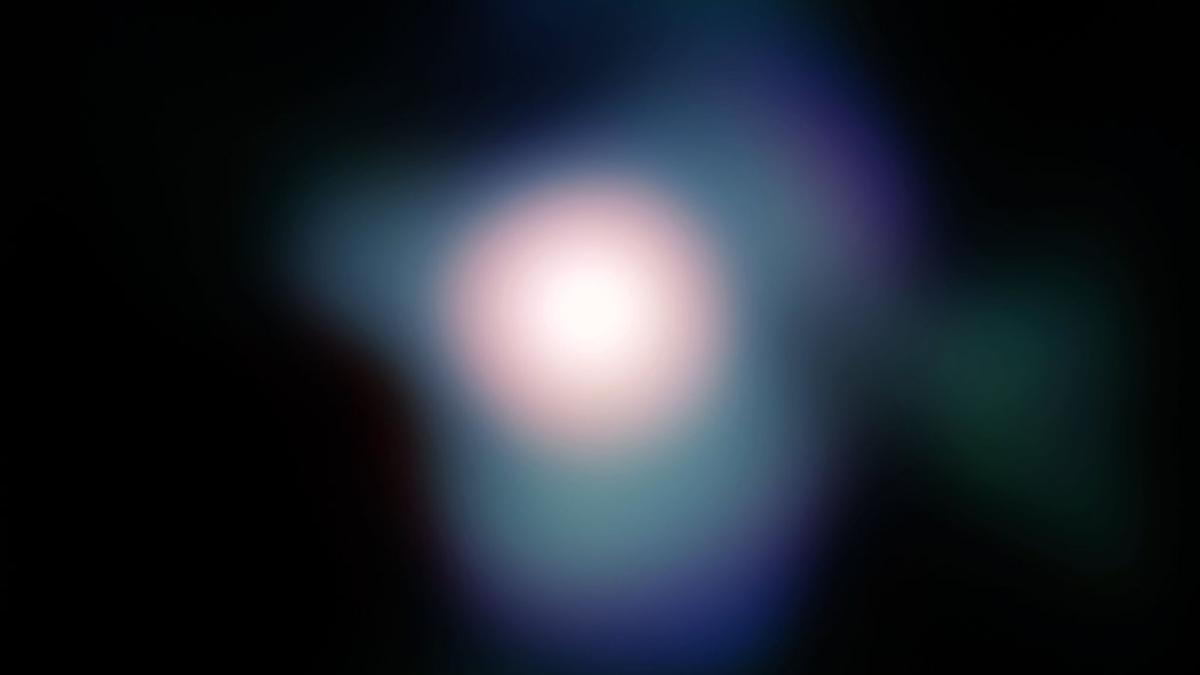The last time a supernova appeared in our galaxy was more than 400 years ago. Stargazers are looking forward to such an event. Is it soon?
The end of large stars is dramatic: when their supplies of nuclear fuel are exhausted, their interior collapses into a neutron star or even a black hole – while the star’s outer layers are hurled out into space with tremendous force. During this explosion, the star glows brightly as a supernova, and can then shine brighter than all the stars in a galaxy put together. While astronomers observe hundreds of supernovae in distant galaxies every year, the last supernova in our Milky Way appeared in 1604 in the constellation Ophiuchus. Therefore, the heavenly researchers are eagerly awaiting such an event at our cosmic doorstep in order to monitor it with their modern tools. And perhaps the supernova flare is “imminent”: Betelgeuse, the bright left shoulder star of the constellation Orion, is showing strange fluctuations in brightness that point to a near, spectacular end.
Scientists argue about how close the end of the star is
But scientists argue about how close this end will be. Pessimists think it could take up to 1.5 million years. On the other hand, optimists expect Betelgeuse to glow brightly in just a few decades – according to their calculations, the star would have already exploded. Because Betelgeuse is 550 light years away from us. So it takes 550 years for its light to reach Earth. If we saw it light up in the sky as a supernova, then this explosion would have actually occurred half a millennium ago.
Betelgeuse is a red giant star 19 times more massive than our Sun – so its fate is different. When our sun uses up its supply of nuclear energy, it contracts – after a short period of inflation – to form a white dwarf star, which cools slowly over billions of years. Stars shine mainly because atomic nuclei fuse inside them at high temperatures and high pressures. This nuclear fusion produces a lot of energy, which we then receive in the form of light and heat. In the sun, hydrogen fuses into helium, and when hydrogen is used up, helium turns back into carbon.
The red giant star is about 760 times more massive than the Sun
Inside a massive star like Betelgeuse, the temperature and pressure are much greater than in the Sun. And this is why – unlike our Sun – the end of nuclear fusion of carbon has not been reached: carbon nuclei can fuse to form heavier elements, mainly neon and sodium. During this phase, the star expands into a red giant: Betelgeuse, about 760 times more massive than the Sun. Relative to our solar system, the orbits of the inner planets Mercury, Venus, Earth and Mars will be hidden within the star. But carbon stocks run out eventually.
We need your consent to display Glomex video
With your consent, external content may be displayed here that complements the editorial text. By activating the content via “acceptance and offer”, glomex GmbH can store or retrieve information on your device and collect and process your personal data, even in countries outside the European Union with a lower level of data protection, to which you expressly consent. Consent applies to your current visit to the Site, but you can withdraw it again during this time using the slider. Data protection
Video: dpa
While the Sun has enough internal pressure at this point to balance out gravity, Betelgeuse has too much mass: the star’s core collapses under its own gravity, forming a neutron star – a mere twenty kilometers or a very large body densely packed with matter. As in the nuclei of atoms. A teaspoon of neutron star matter could weigh about a billion tons on Earth. The density and pressure are so great that the electrons of the atoms are squeezed into the nucleus of the atom and combine there with protons to form neutrons – the entire star consists only of densely packed neutrons, hence its name. The collapse of the star’s interior simultaneously creates an external shock wave that tears the star’s exterior apart in a violent explosion.
Read also about this
In 2019, Betelgeuse has astronomers excited
Betelgeuse, as it turns out, explodes as a bright supernova at the end of evolution. The question remains: when will it be? Betelgeuse is a variable star. Its brightness fluctuates intermittently and unpredictably – a sign of age. However, Betelgeuse has always remained one of the ten brightest stars in the entire sky. But in October 2019, Betelgeuse was unexpectedly waxing and waning, causing astronomers to worry: could that be a harbinger of its explosion? The brightness dropped to about 40 percent and thus was lower than ever. Betelgeuse was not even counted among the twenty brightest stars. But eventually the brightness increased again and reached normal values again in April 2020.
The set of images shows how the red giant Betelgeuse dumps a large amount of hot material, cools it outside the star, and then obscures it as a dark cloud.
Photo: E. Wheatley/NASA/ESA/dpa
Observations with the Hubble Space Telescope finally provided an explanation for Betelgeuse’s startling “Great Dimming”: the star appears to have released a huge cloud of material into space, in which a large amount of dust has formed as a result of cooling – and this dust, as seen from Earth, is blocking out much of starlight. This gave all the clarity, the eruption in Betelgeuse does not seem imminent.
How long will it take before Betelgeuse explodes? 1.5 million years?
According to experts, it could take from ten to one hundred thousand years. Perhaps longer, a research team headed by Ralf Neuhauser of the University of Jena claimed a year ago. In order to gain more knowledge about Betelgeuse, the researchers took an unusual path: they did not see the star with ever better telescopes, but they studied the historical texts in which Betelgeuse is mentioned. The question Neuhäuser and his colleagues pursued was: Was Betelgeuse always a distinctly red star as it is today? Answer: No. Around 100 BC, the Chinese astronomer Sima Qian described Betelgeuse as yellow. And the Roman scientist Hyginus wrote a hundred years later that Betelgeuse was yellow-orange like the planet Saturn.
“From a statement by Danish astronomer Tycho Brahe, it can be concluded that Betelgeuse had overtaken the Aldebaran star in redness in the 16th century,” reports Neuhäuser — today’s Betelgeuse is almost as red as Antares, the brightest star in the constellation Scorpius. Accordingly, Betelgeuse has changed its color dramatically over the past 2,000 years — for the researchers a sign that it only evolved into a red giant during this time. This would put him further from the end of nuclear fusion than previously thought. According to Neuhäuser, it will only explode as a supernova in 1.5 million years.
Could there be a supernova in a few decades?
Recently, a research team from Japan and Switzerland came to a very different conclusion. “Betelgeuse is in the last stage of carbon combustion,” Hideyuki Sayo of Tohoku University and colleagues wrote in the prestigious journal. Monthly Notices of the Royal Astronomical Society The study presented. So the star is a good candidate for the next supernova in the Milky Way – and it could light up in just a few decades.
The team compared Betelgeuse’s vibrations, temperature and brightness measured with a telescope to theoretical models of stellar evolution. The researchers found the best agreement for a star 11 times the mass of the Sun, where nearly all the carbon is already used up. “When the carbon in the core is depleted, collapse and the resulting supernova explosion can be expected within a few decades,” the researchers say.
Therefore, it is worth paying attention to Betelgeuse in order to quickly detect changes. Its supernova explosion would also be astonishing to ordinary people: the star might then shine as brightly as the full moon and be clearly visible in the daytime sky. (dpa)

“Alcohol buff. Troublemaker. Introvert. Student. Social media lover. Web ninja. Bacon fan. Reader.”






More Stories
Conjunction of the Moon and Mars
Skin rash after eating asparagus? What could be behind it?
Entomologists discover a long-extinct wasp | Sciences